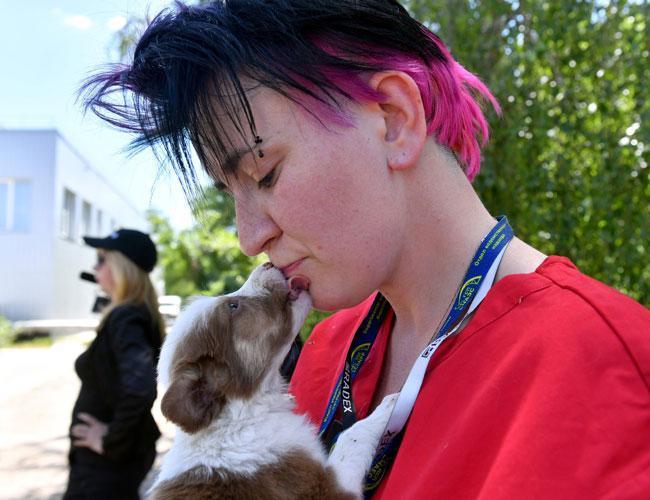Chernobyl stray dogs offered new life in US
CHERNOBLY – Agence France-Presse

The restricted zone around Chernobyl is eerily quiet but one building near the scene of the world’s worst nuclear disaster is full of barking and whining.
The long, one-story structure once served as a makeshift medical center for workers from the plant to receive assistance after the 1986 disaster.
Today it is a hospital for the stray dogs that remain in the 30-kilometer exclusion zone long after its human residents were evacuated following the meltdown.
Lucas Hixson first came to the Ukrainian disaster site from the United States in 2013 to work as a radiation specialist but set up the “Dogs of Chernobyl” adoption and vaccination scheme after being surprised by the number of canines still in the area.
Dog-lover Hixson himself adopted a pet from the exclusion zone in 2017, which he named “Dva” - the Ukrainian word for “two” as it was the second dog to have been adopted from Chernobyl. Both animals now live in the U.S.
“One of the first things that you notice when you go to the plant is the dogs,” he told AFP.
“The dogs can’t read radiation signs - they run, they go where they want,” he added.
About 1,000 stray dogs live in the zone where people are not allowed to reside, according to numbers from the Clean Futures Fund (CFF), the U.S. organization that oversees the dog adoption project.
Some 150 live in the area of the power plant, another 300 in the city of Chernobyl, and the rest at checkpoints, fire stations and villages where a few hundred people are thought to have unofficially moved in.
These dogs have to endure severe winters, snow and rain, not to mention disease and lingering radiation.
And as the wildlife recovers in this almost human-free spot, the dogs face another serious threat - wolves.
















